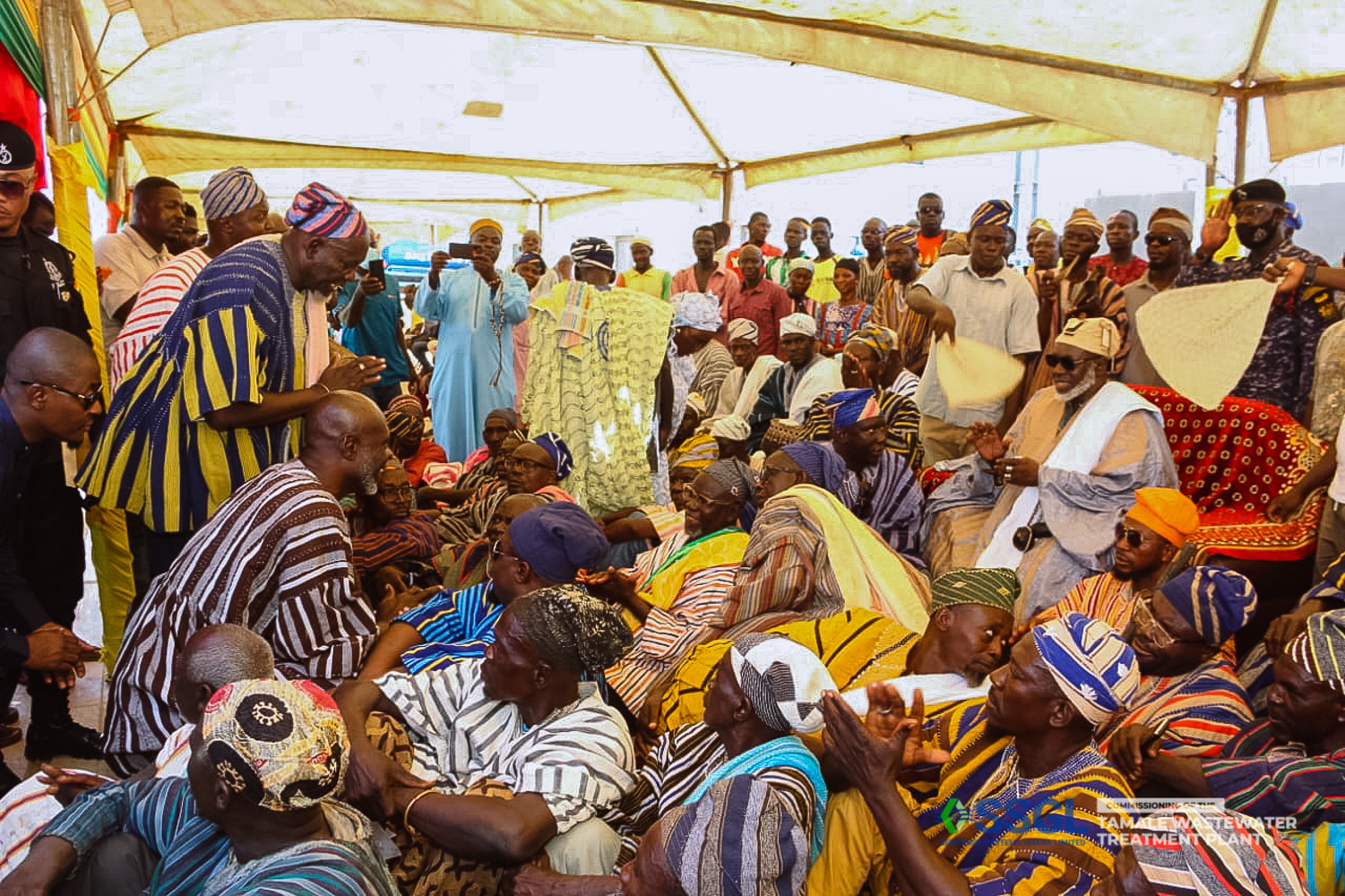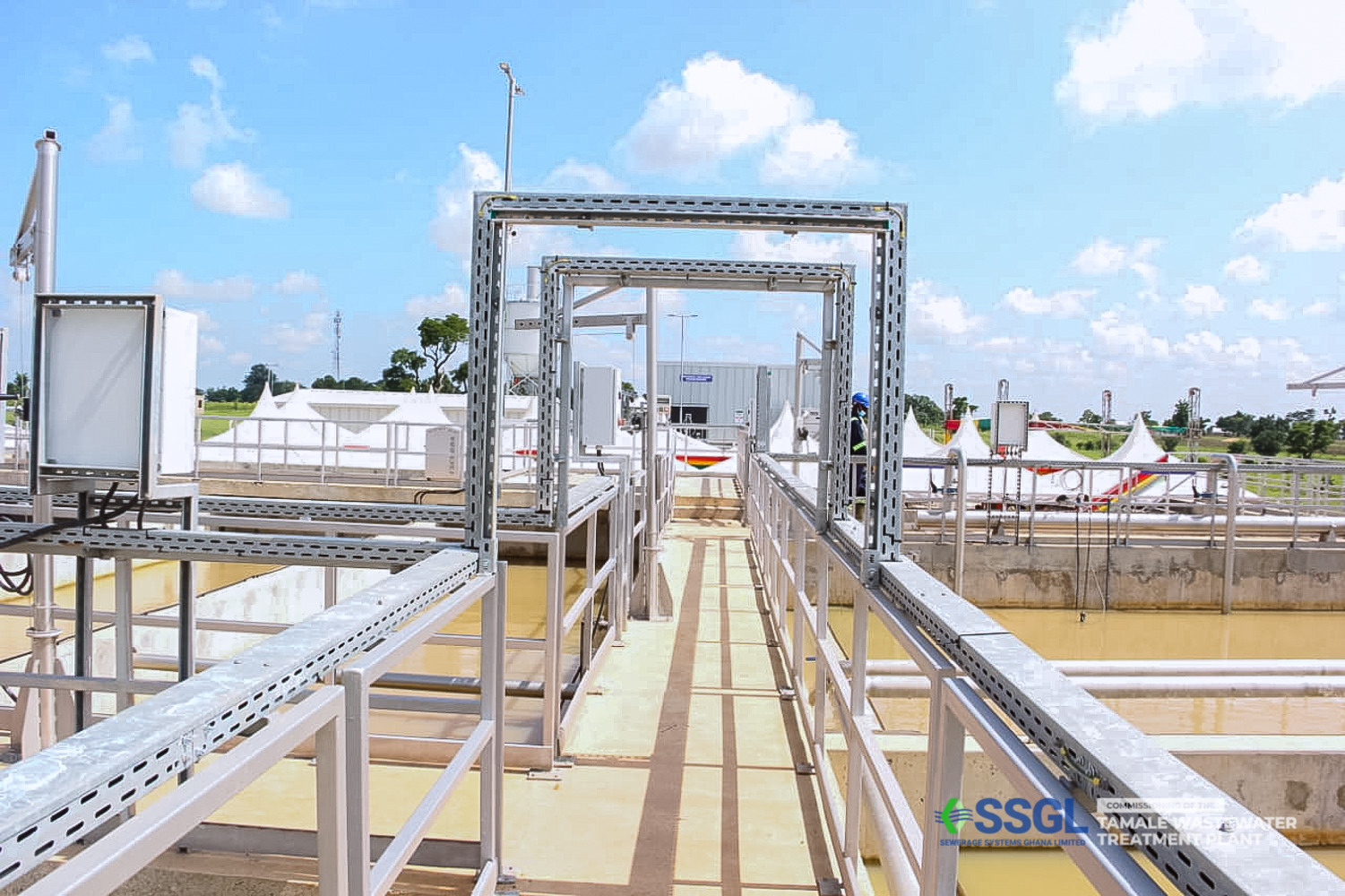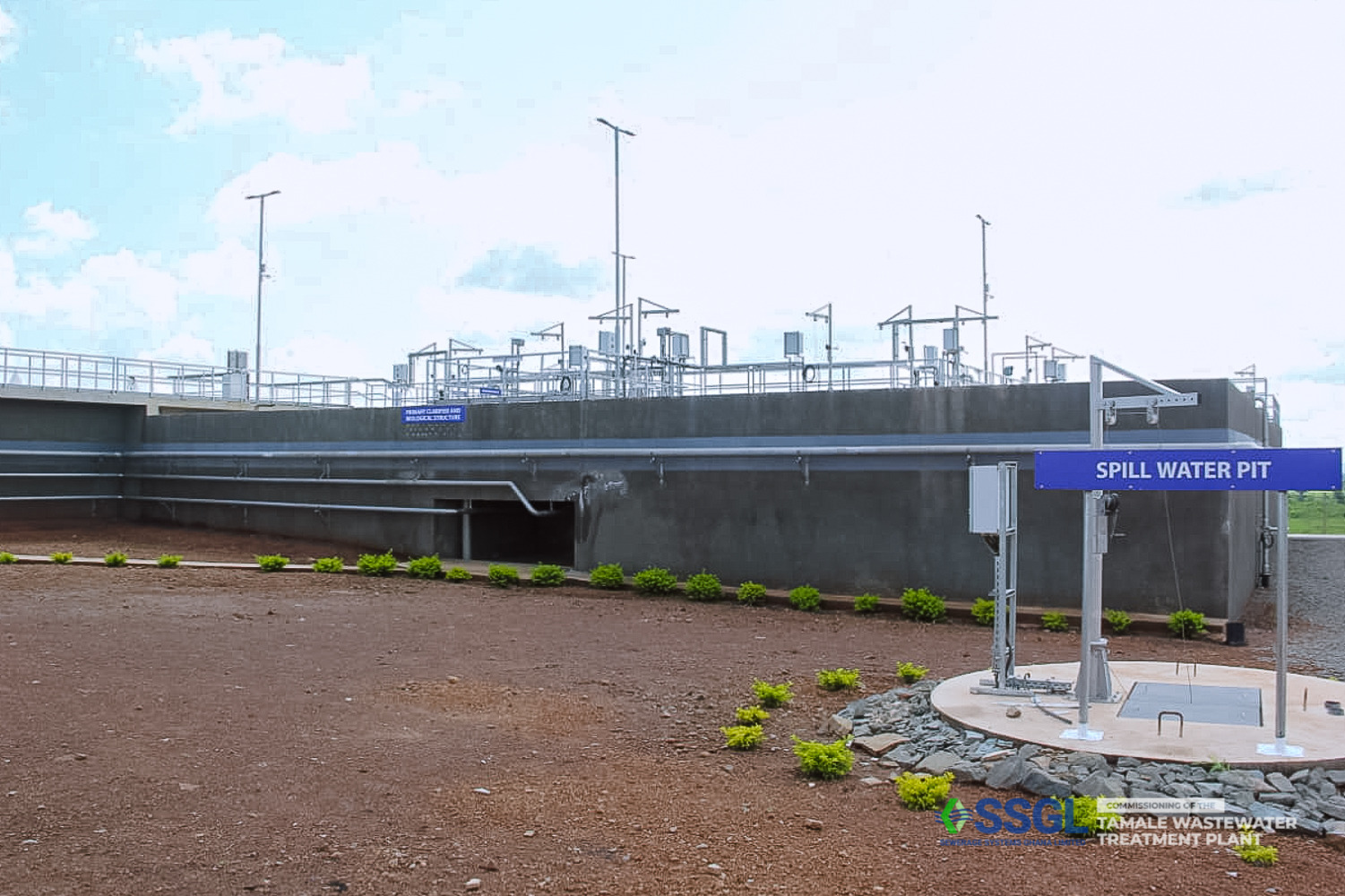The Northern Regional Minister Alhassan Saani Shaibu has commissioned a 1,000 cubic meter wastewater treatment plant at Gbalahi, a suburb of Tamale in the Sagnarigu Municipality in the Northern Region.
The plant, which was designed and constructed by Sewerage Systems Ghana Limited (SSGL) in partnership with Pureco of Hungary, is a 20 million euro project financed by the Hungarian Exim Bank.

Speaking at the commissioning ceremony, Hon. Shaibu said the plant will help to drastically reduce, if not eliminate, the inappropriate disposal of sludge water in the Tamale Metropolis.
“Currently, only 2% of the faecal matter generated in the Tamale Metropolis is properly treated,” he said. “The remaining 98% is diverted into people’s farms, which has a negative impact on public health.”

Shaibu said the New Patriotic Party government, led by H.E. Nana Addo Dankwa Akufo-Addo, has been strategic in implementing sustainable development policies that will address many of the country’s teething problems.

“This wastewater treatment plant is a clear example of our commitment to improving the lives of Ghanaians,” he said.
The State Secretary at the Ministry of Foreign Affairs and Trade of Hungary, Mr. Tristan Azbej, was also present at the commissioning ceremony. He expressed his delight at the partnership between Hungary and Ghana, and urged the workers of the plant to manage it properly to ensure that it lasts for many years to come.

The Chief Operating Officer of the Environment and Sanitation cluster of the Jospong Group of Companies, Mrs. Florence Larbi, gave glory to God for making the dream of a wastewater treatment plant in Tamale a reality. She also appreciated the partnership between Ghana and Hungary, and expressed hope that it will continue to benefit the people of both countries.
Mrs. Larbi also commended the Tolon Naa and his people for the willing release of land for the construction of the plant.

The wastewater treatment plant will receive faecal sludge from Tamale and the adjoining municipal and district administrative areas, such as Sagnarigu, Savelugu, Naton, and Mion. It is expected to provide significant environmental and public health benefits to the people of the Northern Region.
Source: citifmonline


Comments